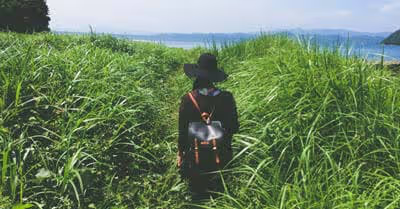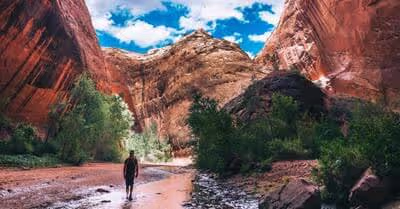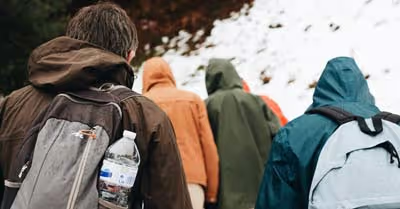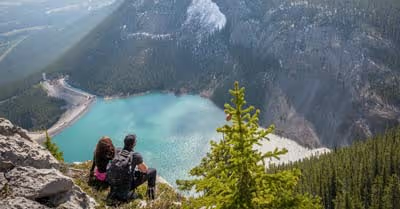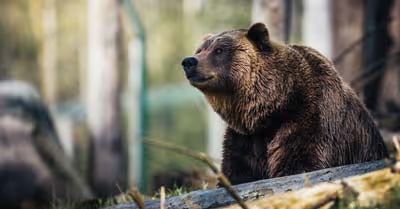Table of Contents
For safety
There are so many small gadgets we can bring with us when hiking to ensure our safety. Whilst hiking is generally very safe, it is a good idea to prepare for the worst. When it comes to safety it is far better to have these gadgets with you and never need them than not have them when you need them most. Just because you haven’t seen a bear yet doesn’t mean you won’t ever see one.
Bear spray
Bear spray is essentially military-grade pepper spray. It comes in a pressurized canister, labeled bear spray or bear mace, and is used just as regular pepper spray is. You turn your face away, spray the cannister at the bear, and then run. Bear spray is very powerful, it will burn your eyes even if you turn away. Now imagine how much it will hurt the bear whos face you spray it directly into. This is perhaps the best way of ensuring you survive a bear encounter. Never open bear spray inside, or you will cause yourself agonizing burning pains in all of your faces orifices.
Air horn
An air horn is a great way of attracting the attention of rescuers, should you need them, and scaring predators away. No one is sure exactly what a bear or mountain line would interpret an airhorn as, but we do know they don’t like it. The loud noise will startle them and they’ll typically bolt. Not always though, that’s why having bear spray is good too.
Handgun
Having a handgun may seem slightly extreme, and it is, but it could save your life. You may feel goofy or like you are doing something wrong taking a handgun with you when hiking through bear country. But, a handgun can save your life should you need to defend yourself against a predator. It is recommended to seek professional training rather than just buying a handgun and hoping when it comes down to it you will be able to make the shot.
First aid kit
Having a first aid kit with you is so important. You can buy cheap first aid kits from CVS or outdoor hiking/camping stores. There are first aid kits specifically designed to fit comfortably in your backpack. The kit will contain bandages, painkillers, disinfectants and perhaps some other bits and pieces. A first aid kit can cost as little as a few bucks but could save the life of you or someone else.
Compass
The odds are you won’t be hiking over unmarked trails for long distances, so a compass probably won’t come in handy. But, you never know. A compass can be very cheap and will help you find your way should you get lost. It can also make reading a map so much easier. A compass can be the size of a dollar coin, so it doesn’t exactly take up much room in your pack.
Map
A map of the area you are hiking is essential for making sure you find your way from A to B safely. Trails erode, trail markers are damaged, the way you are supposed to be going may not always be clear. That’s not a problem when you have a map (and compass). Keeping this map on your phone is fine, but a physical map cant run out of batteries.
Water
Whilst water could fit easily into both the safety and the comfort sections of this article, it is primarily for your wellbeing. Drinking water when exercising is very important, hiking is no different. You should be aiming to drink around 2 cups of water per hour of hiking. More if it is hot and the trail is strenuous. If you neglect to drink enough water and become dehydrated you can become sick, develop headaches, dizziness and even fainting are all potential outcomes. Besides, drinking water and staying hydrated is far more comfortable than not. Bring a sports drink with you if you feel you are going to get sick of drinking nothing but water. The electrolytes in sports drinks can make you feel more energetic and less tired. Just make sure you bring the bottle home with you.
For comfort
Some items you may wish to bring with you are not for safety so much as they are for your comfort. Hiking, especially over long distances, can be hard work for your body. Bringing some things to make it easier for you is perfectly fine, some items are quite large whilst some are small enough to fit in your pocket.
Walking poles
Walking poles are adjustable poles, made from metal or plastic, to make walking long distances easier. You displace your weight onto the poles not just your feet. This can save your feet from doing all the work over long periods. These poles are especially useful for walking up and down steep inclines. A longer pole when walking downhill can help you continue to walk with good posture. Walking up and down hills without these poles will be more tiring and worse for your back. The downside is the poles are inconvenient to carry when they aren’t being used. Additionally, if you fall over with your hands through the wrist strap you can break your wrist.
A pair of socks
Something as simple as bringing a spare pair of socks can save your feet. Walking long distances can cause your feet to sweat and your socks to start rubbing on your feet. This can cause blisters and general soreness that will make the rest of your hike very unpleasant. This is even more prevalent when it’s raining, being able to change socks halfway through your hike can save your feet. Furthermore, if it’s very cold putting on a second pair of socks can help keep your feet warm. No one wants to get frostbite. A pair of socks is small enough to fit in your pocket and weighs almost nothing. Keeping a spare pair, or two, in your backpack is a good idea.
More layers
Filling your pack with more layers may seem inconvenient but it can save you from the discomfort of being cold and wet. You could even argue that, depending on the climate, bringing more layers is a matter of safety, not comfort. Getting hypothermia when hiking can be fatal if you don’t receive medical attention immediately. Whether you are hiking in warm weather or cold, bringing a spare shirt and rain poncho should be part of what you consider your hiking essentials.
Blister bandages
Should you find yourself with blisters on your feet, despite your effort to keep them safe, walking can be very painful. Worse, it can lead to an infection if the blisters should open up. Blister bandages can help ease the pain of the blisters rubbing on your socks and hiking boots. You could even put them on preemptively to prevent getting blisters. This can be costly if you need to buy these bandages before each hike, but if that’s the cost of ensuring you don’t ever get blisters the price may be worth it.
For fun
Packing the hiking essentials doesn’t always mean the items needed for safety and comfort, sometimes you might want to bring some things just for fun. It’s perfectly fine to bring things to enhance your own hiking experience.
Bluetooth speaker
If you are hiking alone or with others, you may want to listen to music, audiobooks, or podcasts. So long as you don’t play it loud enough that you are disturbing the wildlife and other hikers, this is fine. Hiking and listening to an audiobook can be very therapeutic.
Drone
Bringing a drone with camera capabilities when you go hiking can be great fun. You can get some truly unique and stunning photo opportunities on your journey. You may even be able to snap some high-quality pictures of yourself while hiking. If you are an enthusiastic photographer, this is a great way to blend your two hobbies.
Handbook
Bringing a handbook that details all of the animals, plants, and general wildlife of the area can be a great way of feeling more connected to nature. Learning as you go all the different plants and animal species can be very enjoyable. It will give you a newfound appreciation for where you are. It will also help you avoid poisonous plants.
Conclusion
Not every item on this list is vital and MUST be brought with you when hiking, in some places you genuinely are fine with nothing but some hiking boots and a bottle of water. But, bringing these items is advisable. You can fit every item on this (even the drone) in a medium-sized backpack. Carrying a heavy pack isn’t always fun, but it becomes easier over time and can save your life. At the very least, bring the items found on the safety section of the list. Bear spray is always good to bring unless of course, you live nowhere near bear country.
Recent Articles



